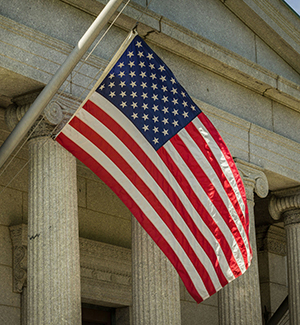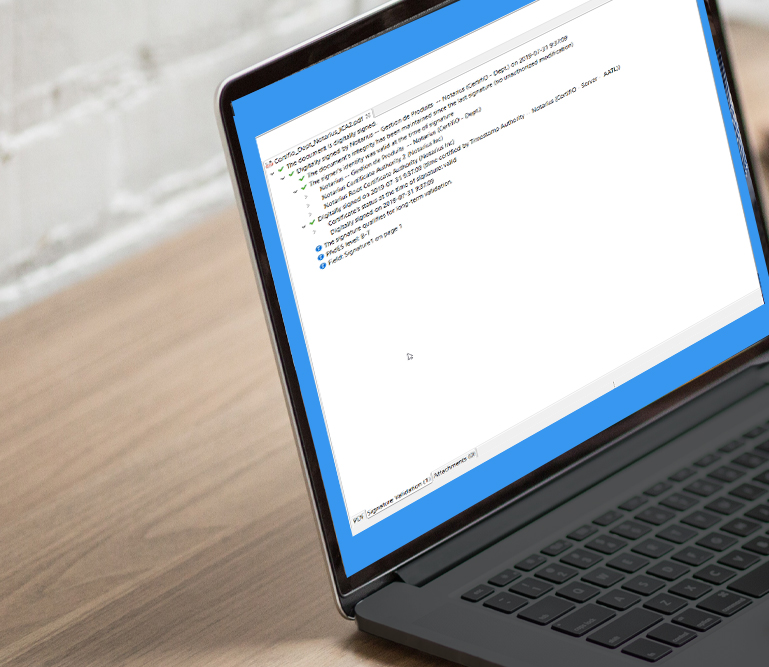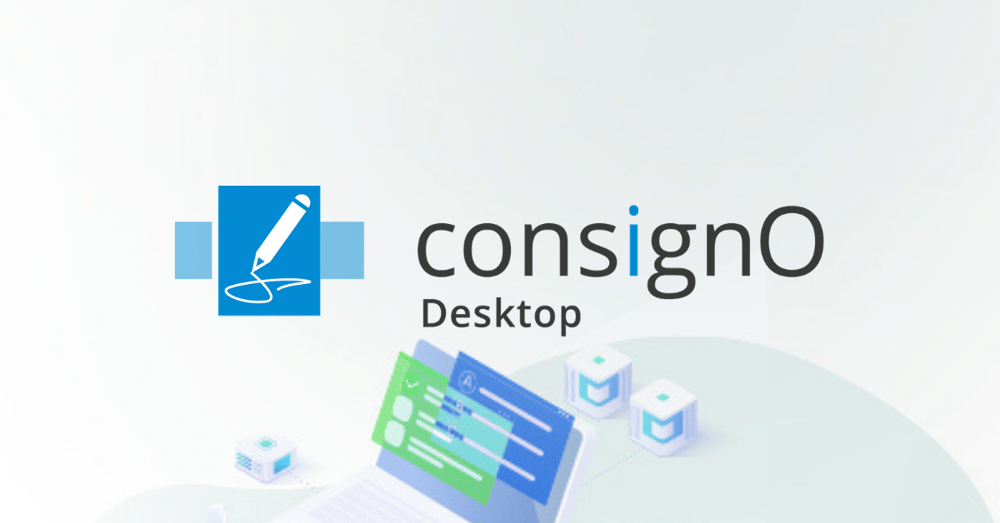Digitally Sign PDFs: An Essential Guide for Professionals

The digital age has transformed the way we work, including the way professionals in regulated fields like engineers and architects authenticate their work product and professional documentation.
Digital signature standards have been established to provide a secure, efficient, and legally binding method of authenticating documents in the architecture, engineering and construction (AEC) industry.
In this article, we will delve into the ins and outs of using digital signatures, with a particular focus on how to digitally sign PDF documents.
What is a digital signature?
A digital signature is a specific type of electronic signature (e-signature) that relies on public-key cryptography to support identity authentication and provide data and transaction integrity. It is bound to the identity of an individual or an organization, lending credibility and accountability to a document. Third-party issued digital signatures are considered legally binding and non-repudiable, meaning they cannot be disputed or denied.

Are digital signatures legal in the USA?
Yes, digital signatures are legal in the United States. They are recognized by law and have the same legal status as traditional handwritten signatures due to the passage of the Electronic Signatures in Global and National Commerce Act (ESIGN) in 2000, and the Uniform Electronic Transactions Act (UETA) which has been adopted by 49 states, as well as the District of Columbia and the U.S. Virgin Islands. Both of these acts confirm that electronic records and signatures carry the same weight and legal effect as traditional paper documents and handwritten signatures, provided they meet certain criteria.

Are digital signatures legal in Canada?
In Canada, digital signatures are recognized as legal and valid under the Personal Information Protection and Electronic Documents Act (PIPEDA). This legislation ensures that transactions carried out using digital signatures have the same legal standing as those conducted with traditional signatures.
Keep in mind that it is always advisable to consult with legal counsel when employing digital signatures to ensure compliance with current laws and regulations.
Digital signatures vs. electronic signatures
People often use the terms “digital signature” and “electronic signature” interchangeably, but they are not the same. An electronic signature in a PDF is a broad term that refers to any electronic process signifying an approval to terms outlined in a contract, agreements, or document, presented in an electronic format. In contrast, digital signatures in a PDF involve more sophisticated technology to secure data and verify the authenticity of a document.
E-signature platforms: All electronic signatures are not equal
Most electronic signatures from popular platforms link a person’s identity to their email address. However, this practice has legal limitations when it comes to approving engineering plans, architectural documents, or contracts with significant organizational impacts.
Moreover, the underlying practices of these platforms (unprotected audit logs, unavailable PDF/A format, deficient document protection mechanisms during the signature cycle, etc.) do not always guarantee a high level of legal reliability.
CertifiO® for Professionals digital signature vs. other digital signatures
At Notarius, we offer CertifiO professional digital signing certificates. We help professional associations issue certificates for digital signatures to their members following an ID verification and a validation of their right to practice.
Unlike self-signed signing certificates, which are issued by the user without identity verification by a trusted third party (a Certificate Authority), a CertifiO professional digital signature is a verified digital signature that is the equivalent of a professional passport (or digital identity). In addition to ensuring the integrity of electronic documents, the civic and professional identity proofs contained in the signing certificate ensure the non-repudiation of the signed documents.
Furthermore, Notarius offers software, applications, and added-value environments to ensure that all parties of a regulated organization can make the most of professional digital signatures. This includes the ConsignO Desktop PDF reader, the ConsignO Cloud Solo web application, and the ConsignO Cloud® electronic signature platform.
Engineering stamps: The image of your seal and signature is not enough!
Many professionals mistakenly believe that the image of a seal and a signature implies that they have protected their electronic documents. This is incorrect. Today, anyone can copy and paste an image of a seal or manipulate one within minutes. As noted above, this can be regarded as an electronic signature, though with a very low level of legal reliability.
For electronic documents, the cryptographic mechanisms provided by a digital signature are the only means to protect documents against alterations and fraud. Legally, the proof of identity included in the CertifiO digital signature certificate ensures the authenticity of the signed document.
Ultimately, using a professional CertifiO digital signature is the best way to protect your professional identity. While a fraudster can steal the image of your seal and signature, they cannot steal your professional digital signature.
Have you read:
The importance of using a trusted third-party Certificate Authority

When applying a trusted signature to a document, it’s crucial to use a digital certificate issued by a trusted third-party Certificate Authority. This is because the Certificate Authority verifies the signer’s identity, providing an added layer of security and assurance to the signature validation process. Furthermore, CertifiO professional digital signatures, issued by professional associations in Canada, include mechanisms to revoke their use, thereby enhancing control over the right to practice within their regulated jurisdictions.
When dealing with an audited and certified Certificate Authority, you can rely on the best processes in the industry to ensure that the digital signature certificates you use are reliable and secure. They come with a higher degree of assurance and robust management mechanisms.
A certified and audited Certificate Authority like Notarius manages public key infrastructures (PKIs) in compliance with industry best practices for security and maintenance.
Moreover, a Certificate Authority also provides its clients with the ability to revoke the use of a digital signature if an employee or regulated professional no longer has the required rights to use it (available in Canada with Notarius). These mechanisms ensure better control over signers’ rights and reduce the risks of professional fraud. For regulated professional bodies and employers, these features are significant in a digitally challenging and difficult-to-regulate world.
How to digitally sign a PDF document
To digitally sign a PDF in full compliance, you’ll need a digital signature certificate from a recognized Certificate Authority like Notarius. Once you’ve obtained this digital signature, you can use software like ConsignO Desktop, Adobe Acrobat, or Bluebeam to apply your digital signature to a PDF document.

Here is a step-by-step guide on how to digitally sign a PDF document using ConsignO Desktop:
- Open your PDF document with ConsignO Desktop.
- Convert it to PDF/A
- Create a Signature Zone to apply a seal and signature appearance.
- Click Sign
- Select your digital certificate from the Digital signature certificate drop-down menu.
- Select the Signature appearance from the list.
- Select options to Display the signature reason, the date, and/or custom text on the signature.
- Click Sign.
- With the CertifiO Desktop digital signature, you will be prompted to enter the password associated with your digital certificate (.epf).
- With the CertifiO Cloud digital signature, you will need to log into your session using your password and confirm your second authentication factor.
The benefits of professional digital signatures
Professional digital signatures offer numerous benefits, including:
- Efficiency Digitally signing PDFs can significantly speed up workflows, allowing documents to be approved and distributed quickly.
- Security Digital signatures use state-of-the-art encryption technology to secure data, reducing the risk of document tampering.
- Non-repudiation Because they are bound to the signer’s identity, professional digital signatures provide a non-repudiable record of approval.
- Legally binding Digital signatures issued by a Certificate Authority are recognized as legally binding in many jurisdictions, including Canada and the USA
- Savings The cost of a digital signature is significantly lower compared to the paper-based method, which involves shipping, printing costs, salaries, and multiple iteration cycles.
Sign and seal: Longevity of professional documents
When using their CertifiO® digital signature, professionals establish a distinctive connection between the document’s digital fingerprint and their identity. Notarius reinforces this with a certified infrastructure, providing proof that the signer’s identity and attributes (affiliation, employment, membership) were valid at the time of signing.
This identity and authenticity validation is embedded into the document using the PAdES standard, thus ensuring the signature’s longevity and long-term association with the electronic document throughout its lifecycle.
In addition, the ConsignO Desktop PDF reader included with CertifiO enables easy conversion of PDFs to the PDF/A format (the ISO standard for archiving). This ensures that the document and its content are guaranteed to be viewable and readable for decades to come.
ConsignO Desktop: a PDF reader and digital signature software designed for the AEC industry

ConsignO Desktop is a specialized PDF reader that is meticulously crafted to address professional challenges and is specifically tailored to meet compliance requirements.
ConsignO Desktop streamlines the signing process due to its template creation and batch signing functionalities. These signature templates become integral to the project management process by eliminating repetitive manual steps when signing documents. The software also allows users to establish signature zones on recurrent documents, thereby optimizing workflows and promoting consistency with regulatory standards.
ConsignO Desktop also allows for batch signatures with a simple right-click in a file browser, increasing speed without compromising consistency or regulatory adherence. For multi-page documents, the software categorizes signature zones, facilitating the application of seal images or initials, and streamlining the authentication process for large volumes of documents.
Best practices for digitally signing professional documents with ConsignO Desktop
1. Accompany a seal and signature image with a professional digital signature
You must always apply the CertifiO Professional digital signature together with your seal and signature image. While a seal image is susceptible to tampering, the professional digital signature ensures non-repudiation and guards against unauthorized alterations, providing robust identity protection.
2. Simultaneous application of the seal image and digital signature
Beyond standardizing your seal and signature images so that you can add a date, a reason for signing, and custom text, this software allows engineers to affix both a CertifiO professional digital signature and a visual seal simultaneously. This dual authentication method simplifies adherence to diverse regulatory practices among professionals and engineers.
3. Multiple digital signatures on a single document
Allow multiple professionals to sign the same document by applying several CertifiO professional digital signatures. Verification can be done with Adobe Acrobat®, Bluebeam®, and ConsignO Desktop, providing flexibility and security.
4. Annotate with security
While it is possible to annotate digitally signed documents, the digital signature’s indication of modifications ensures heightened security compared to a traditional wet signature. Original files can be restored, thereby maintaining document integrity.
5. Batch conversion to PDF-A format
For long-term archiving, converting documents to PDF/A format is recommended. ConsignO Desktop’s free batch PDF/A conversion feature streamlines the process, enhancing workflow efficiency and ensuring document preservation.
6. Authenticate AutoCAD files (or any type of file) in PDF/A-3 documents
You can attach .dwg files to an ISO-standardized PDF/A-3 document and digitally sign it for long-term archiving. Including additional information about the project, a list of attachments, and a certification paragraph ensures that the signer’s identity will be recognized in the future.
7. Merging PDFs with digital signatures
When merging signed PDFs, you must be careful to treat them as originals during circulation. Various solutions, including using PDF/A-3 as a container or creating a new signed PDF, maintain the integrity of digital signatures.
8. Embrace digital literacy with training
To fully leverage CertifiO professional digital signatures and ConsignO signing tools, free training workshops are available. These resources empower professionals to develop robust digital authentication practices.
Have you read:
- 7 Effective Tips for Digitally Signing Drawings and Reports
- 5 Best Practices to Ensure that Your Electronic Drawings are Compliant
- 8 Best Practices for Digitally Signing Professional Engineering Documents
Implementing digital signatures in engineering firms

For firms and organizations, the adoption of electronic signature solutions can foster a more effective, compliant, and streamlined operational model. These solutions ensure the authenticity of signed PDFs and adhere to the highest levels of assurance and security for document integrity, meeting official electronic signature requirements.
For project managers, professional digital signatures enable better management of work schedules by ensuring improved predictability regarding document authentication cycles. This predictability is further reinforced by the ability to access all professionals at any time, regardless of their geographical location.
In the digital age where remote work has become the norm, the incorporation of effective digital signature tools has become imperative. CertifiO® professional digital signatures, endorsed by engineering associations, are a strategic choice offering a secure and efficient means of authentication. Compatible with widely used PDF readers like ConsignO Desktop, Bluebeam Revu, and Acrobat Reader, these digital signatures empower professionals to optimize work processes.
Streamlining project management with ConsignO Tools
Using CertifiO digital signatures in ConsignO Desktop and ConsignO Cloud provides project managers with robust tools for standardized electronic stamping, batch signing, internal-external signing processes and the validation of digitally signed documents.
These tools not only streamline the signing process but also facilitate governance of compliance issues, safeguarding the non-repudiation of electronic engineering documents.
Seamless internal-external signature processes with ConsignO Cloud® integration
Additionally, project managers can seamlessly handle complex internal-external signature processes with the integration of ConsignO Cloud, the trusted e-signature platform.
With ConsignO Cloud, project managers get an overview of projects and can allow signers without professional digital signatures to sign with two-factor authentication. Furthermore, the platform allows users to customize the signing experience with the organization’s branding, conduct bulk sends, and add additional approvers who are not signers to the signing workflow.
Advocating for efficiency, cost, and quality gains
As a testimony to the efficacy of these digital tools, project managers can promote their integration by emphasizing gains in efficiency, cost savings, and quality. Moreover, when assessing plans for the deployment of digital signatures within organizations, highly reliable data and trusted advice can be used to back up your decision, as these tools have been widely adopted for decades.
Facilitating a smooth digital transition with CertifiO and ConsignO solutions
The availability of free training resources further facilitates a smooth digital transition, giving teams the skills they need to embrace technological innovations. Ultimately, the adoption of CertifiO professional digital signatures and ConsignO tools are a catalyst for radical optimization within engineering firms, setting new standards of excellence and ensuring a competitive and secure future for the organization.
You may be interested in:
APIs: Integrating digital signatures in your application
For project managers eager to integrate signature capabilities into their third-party applications to enhance the user experience, simple integration APIs and connectors are available. As a result, project managers can optimize digital and electronic signatures within Document Management Systems (DMS) such as SharePoint or internally designed systems for specific workflow cycles. Professionals can quickly share documents and include authentication processes in an integrated and seamless environment.
Employing single sign-on to enhance the internal signing workflow
By deploying ConsignO Cloud, the electronic signature platform, all employees can easily sign off on documents using Single Sign-On (SSO). This allows regulated professionals to sign with their professional digital signature, while employees can sign with more robust electronic signatures.
Uncovering the prevalent bad practices in the engineering industry
Unfortunately, bad practices are still pervasive within the industry, which can put at risk the engineering profession itself, public protection, and ultimately, the public’s trust in the practice.
Whether due to a lack of knowledge, negligence, or resistance to change, professionals often use workaround methods to avoid employing best practices related to digital signatures.
Here are a few examples:
-
Using a self-signed certificate
-
Offered for free in many PDF readers, this method of creating a digital signature is certainly tempting, but it in no way proves the signer’s identity. Anyone can issue it and claim to be an engineer. Moreover, since this certificate is not issued by a regulatory authority for the profession or a certificate authority, there is no mechanism to suspend the use of the certificate if the member is suspended or retired.
-
-
Signing with a popular electronic signature
- Although an electronic signature provided through a platform can protect a document’s integrity with a signature certificate, the signer’s identity is often only verified using an email and sometimes a second factor (e.g., SMS). However, these identity factors do not prove that the signer is indeed an engineer authorized to practice.
-
Furthermore, a CertifiO® digital signature is only issued after a face-to-face identity check and a validation of the reserved title by the professional association (Canada). This signature is under the unique control of the member and only they know their secret password.
Looking forward: taking action against engineering fraud

Engineering fraud is a prevailing issue, especially when it comes to the authentication of professional engineering documents. This problem impacts both engineers and the general public, underscoring the need for robust prevention measures. Collaboration among engineers, firms, organizations, cities, municipalities, and professional associations is crucial to establishing stringent requirements and workflows that deter fraudulent activities.
In all cases, the use of a professional digital signature prevents fraudsters from stealing an engineering seal or professionals from adopting bad practices.
The following real cases shed light on the failures of inadequate authentication practices:
- Professional signature forgery: A Nova Scotia corporation fraudulently used a PEO member’s seal and signature, facing legal consequences, fines, and a civil case. The forgery was discovered when the engineer confirmed non-involvement.
- Fabricating seals and signatures: A resident of Kitchener, Ontario, impersonated an engineer, designing professional engineering drawings and affixing a facsimile PEO seal and signature.
- Stolen seal and signature: Two members of Engineers and Geoscientists BC (EGBC) faced disciplinary actions when a mechanical engineer, pressured by a client, fraudulently used an electrical engineer’s seal and signature on project documents without consent.
- Engineer identity theft: A resident of Cambridge, Ontario, altered an engineering document after authentication, emphasizing the need for submitting documents electronically with digital signatures.
- Unauthorized document “repurposing”: Concerns arose about blueprint fraud during home construction in Winnipeg, Manitoba, revealing misuse of an engineer’s seal and signature without consent and modifications to authenticated documents.
- Misuse of a professional seal and signature: A member of Professional Engineers Ontario (PEO) faced disciplinary actions for misrepresenting a firm’s authorized status, continuing to use the seal and signature despite warnings.
These cases highlight the tangible threats posed by engineering fraud and the necessity of safeguarding professional seals and signatures. CertifiO professional digital signatures are an ideal solution, providing secure and authentic document authentication for engineers and regulated professionals.
Organizations accepting professional engineering documents must implement robust verification processes aligned with best practices to collectively defend against fraudulent activities. Adopting professional digital signatures ensures enhanced protection for the engineering practice and the public.
Educating clients: the importance of signature validation in the engineering industry
The digital age has brought a paradigm shift. With over 91% of North Americans using the internet, the electronic standard is now the norm. Paper, while still in use, is no longer the preferred method for communication and work.
Indeed, as copying and circulating an image is extremely easy in the digital world, it becomes clear that widespread adoption of professional digital signatures is necessary to ensure the non-repudiation of engineering documents and the integrity of seals.
However, to fully benefit from this method of authentication, it is crucial to educate clients, cities, and governments to verify that the documents they receive have been correctly digitally signed and are indeed intact and reliable.
Validation must become a reflex within the industry. It is a simple, easy, and free action that can be done manually in any PDF reader, but also automatically with tools like VerifiO Server.
See for yourself. It’s even easier via VerifiO.com.
Was it a legally licensed engineer who signed?
By validating the documents signed with a CertifiO digital signature, a recipient can verify various elements that ensure the legal reliability of the engineering document.
- Document integrity
If the document is no longer intact, the digital signature will disappear and the document will no longer be authentic. - The identity of the signer
The first name, last name, designation, name of the professional association or employer (Canada), and email address will appear in the certificate. - The root certificate
It will be possible to identify the Notarius Certificate Authority (CA), proving that the certificate is issued by a trustworthy source and not by a self-signed certificate. - Timestamp authority
The official universal time of the signature, not the time of the device used to sign (requires an internet connection).
Driving the engineering industry’s digital transformation
With a growing global population and issues linked to climate change on the rise, the engineering industry will have to meet enormous challenges in the coming years.
The advent of technologies like AI, 5G, and 3D printing will greatly contribute to the performance of future infrastructure and designs. However, these methods will require a comprehensive digital transformation of the industry in order for engineers to become more resilient, fast, and up to the challenges mentioned above. Firms that want to remain competitive in the global economy have already begun to leverage new digital technologies and adopt BIM methods, among others.
The professional digital signature is an essential tool to ensure the integrity of engineering work and to protect the public. Even as processes become more efficient, engineers will still have to take responsibility for their work.
To take advantage of value-added digital environments, the CertifiO professional digital signature and ConsignO tools are the best allies for optimizing engineering workflows. The benefits are especially evident when it comes to signing in a hybrid mode.
Securing the future: The rise of professional digital signatures in engineering
Adopting professional digital signatures is therefore a good practice for the future of the industry. As their use gains momentum, the method will set the standard in the short term and ensure the normal evolution of the practice towards the fourth industrial revolution.
With the rapid pace of technological advancement, the engineering sector must keep up to ensure the safety, reliability, and trustworthiness of its practices. A professional digital signature is a key component in achieving this goal. It provides a secure and verifiable means of authenticating documents and work, which is essential in an industry where stakes are high and errors can have serious consequences.
Furthermore, as the industry moves towards more digital and automated systems, the need for reliable digital authentication becomes increasingly critical. The adoption of professional digital signatures will facilitate a smoother transition into these new technological standards and practices. They also help to establish a uniform method of validation across the AEC sector, making it easier to maintain oversight and accountability.
This move is not just about keeping pace with current trends, but also about setting a foundation for future innovation and growth within the engineering profession.
